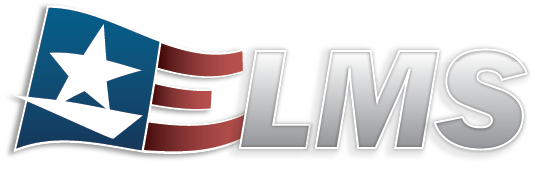Description:
IThe current Enterprise Logistics Management System (ELMS) lacks a standardized capability to execute and track Mass Equipment Transfers across units, DODAACs, or custodial records. In the legacy GCSS-MC system, the Equipment Asset Transfer Order (EATO) process enables the Marine Corps to transfer property accountability between organizations while maintaining equipment history and audit traceability. However, ELMS currently does not replicate or enhance this essential function.Without a Mass Equipment Transfer capability, units encounter significant challenges in maintaining accurate property accountability, reconciling equipment custody, and preserving visibility of assets as they move between commands, operational areas, or deployment task forces. During large-scale or individual transfers, critical equipment data—such as modifications, PMCS records, calibration history, open work orders, parent/child relationships, and open requisitions—does not follow the equipment to its new owner, resulting in fragmented data continuity and audit risk.The Marine Corps requires an integrated, auditable Mass Equipment Transfer process within ELMS that allows authorized users to initiate, approve, track, and complete transfers across organizational boundaries. This process must preserve full equipment history, ensure compliance with financial and accountability regulations, and provide commanders with real-time asset visibility to support readiness reporting, deployment operations, and enterprise-level decision-making.
Recommended:
FR1. ELMS shall allow authorized users to create an Enterprise Accountable Transfer Order (EATO) request that captures all required data fields: Gaining DODAAC, Losing DODAAC, NSN, NIIN, Serial Number, TAMCN, Quantity, and Condition Code.
FR2. ELMS shall automatically generate a unique mass equipment transfer document number for each transfer request to ensure traceability and auditability.
FR3. ELMS shall route the mass equipment transfer request to the appropriate approving authority (e.g., Supply Officer, Commanding Officer, or delegated approver) based on established routing logic and user roles.
FR4. ELMS shall allow digital signatures by authorized personnel using authenticated CAC/EDIPI credentials and maintain a full audit trail of all signatures and approvals.
FR5. ELMS shall validate that equipment being transferred is serviceable, not tied to an open Work Order, and not restricted by funding or custody conditions, and shall display user alerts for validation failures.
FR6. ELMS shall automatically update property records to reflect the transfer of accountability from the losing unit/DODAAC to the gaining unit/DODAAC upon approval.
FR7. ELMS shall ensure all equipment history data (maintenance, readiness, warranty, calibration, etc.) remains intact and linked to the item record upon transfer to the gaining unit.
FR8. ELMS shall notify both the losing and gaining organizations via system notifications and/or email at each stage of the transfer (submission, approval, completion).
FR9. ELMS shall provide a dashboard or report interface displaying all open, pending, and completed EATO actions with sortable and filterable fields (e.g., status, date, DODAAC).
FR10. ELMS shall maintain a permanent audit record of all mass equipment transactions, including initiator, approver, timestamps, and data changes.
FR11. ELMS shall support user queries by asset, Equipment document number, DODAAC, NSN, NIIN, or date range, and allow export of query results to standard report formats (CSV, PDF, Excel).
FR12. ELMS shall support mass transfer functionality to process multiple equipment items under a single EATO document for deployment, redeployment, or large-scale realignment operations.
FR13. ELMS shall allow users to upload or import bulk equipment lists (e.g., CSV or Excel format) containing NSN, NIIN, Serial Number, and Quantity for batch EATO creation
FR14. ELMS shall validate each item in a bulk EATO against property records to ensure data accuracy, completeness, and non-duplication prior to submission.
FR15. ELMS shall allow authorized users to group items by TAMCN, Subset, or Functional Area to streamline transfer requests during deployments.
FR16. ELMS shall generate an Mass equipment transfer Summary Report consolidating all items transferred under a mass movement event, showing losing and gaining DODAACs, quantities, serials, and approval timestamps.
FR17. ELMS shall interface with other Marine Corps logistics systems (e.g., GCSS-MC, TFSMS, ELMS) to synchronize accountability updates following mass transfer execution.
FR18. ELMS shall provide an automated deployment transfer template that pre-fills gaining unit and ship DODAACs, based on operation plans or TFSMS tasking, to accelerate processing.
FR19. ELMS shall allow authorized users to reverse or cancel pending Mass Equipment Transfers prior to final approval and document all reversal actions in the audit trail.
FR20. ELMS shall generate automated alerts for assets remaining in “pending transfer” status beyond a command-defined threshold (e.g., 30 days) to prevent orphaned transactions.
Mission Critical:
Response to Audit Finding - Accountability of capital assets, P2P, E&C
Compliance Requirement - MCO 4400.201, MCO 4790.2, NAVMC 3500
Benefits:
-Meets MARCORLOGCOM’s business model
-Assists in 100% accountability of assets.
- Complies with current audit controls.
Frequency: Daily
Users:



